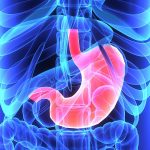
If you’ve ever wondered why emotional distress causes stomach cramps or a mad dash to the bathroom, know that there’s a direct line of communication that runs from your brain to your digestive tract. It’s called the enteric nervous system, and it can have a powerful effect. For instance, when you feel nervous or threatened, digestion can slow or stop so that your body can focus on functions with higher priority — and that might result in cramps or diarrhea. This is a hallmark of the condition called irritable bowel syndrome, or IBS. The brain-gut connection works in both directions. For example, having a digestive condition can make you anxious or cause emotional distress. Plus, that anxiety can then worsen your digestive symptoms. Researchers recently found a connection between depression and the absence of certain good gut bacteria — they can’t yet say which comes first, but it’s clear that there’s some type of relationship. If your gut reacts negatively to emotions and it’s affecting your life, talk to your doctor. Find out if you have a digestive issue that’s causing physical as well as emotional stress, such as IBS, and take steps to treat it. These may involve changes to your diet and other lifestyle habits. Know that the answer doesn’t always have to include drug therapy. To master anxiety regardless of its source,… read on >
















